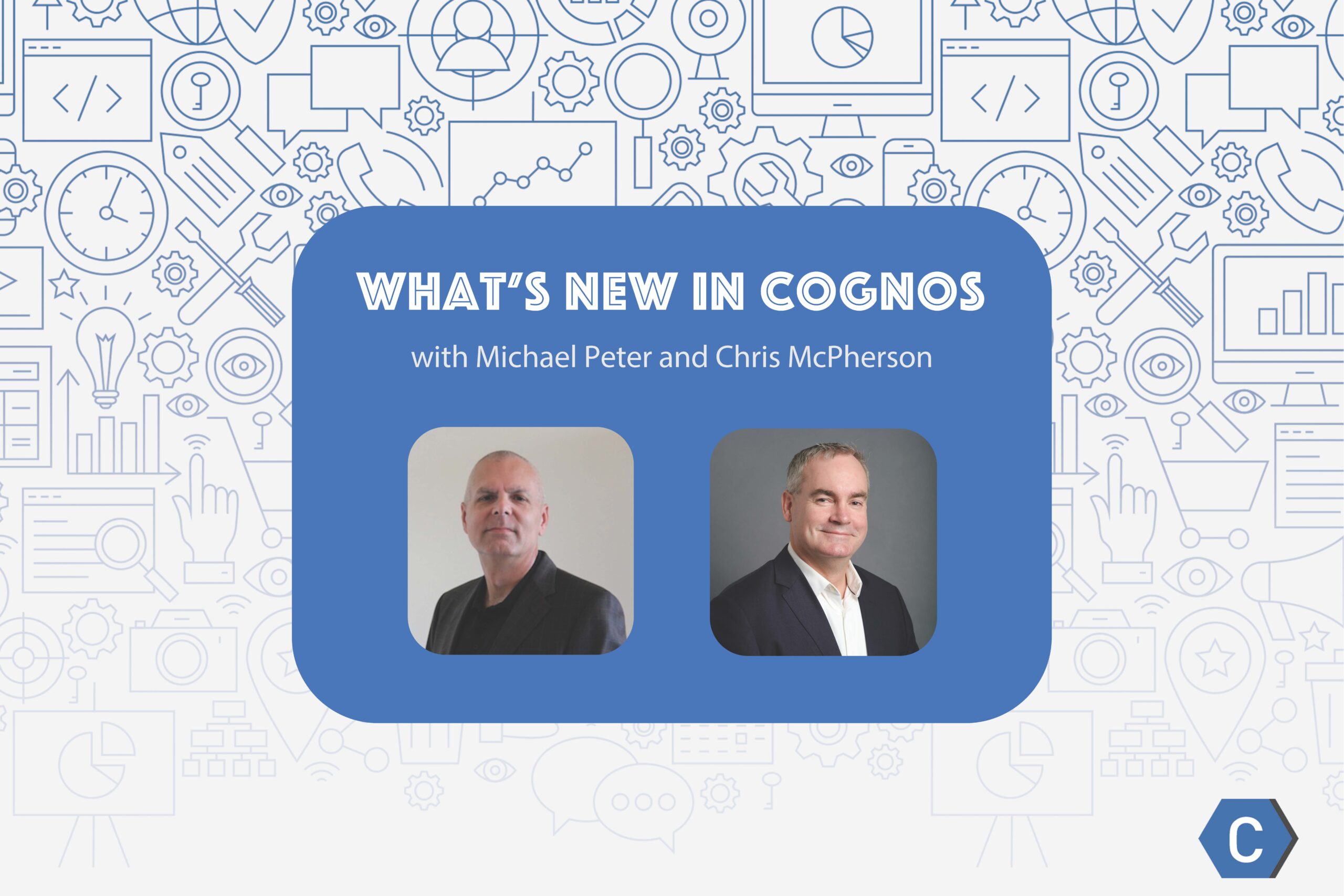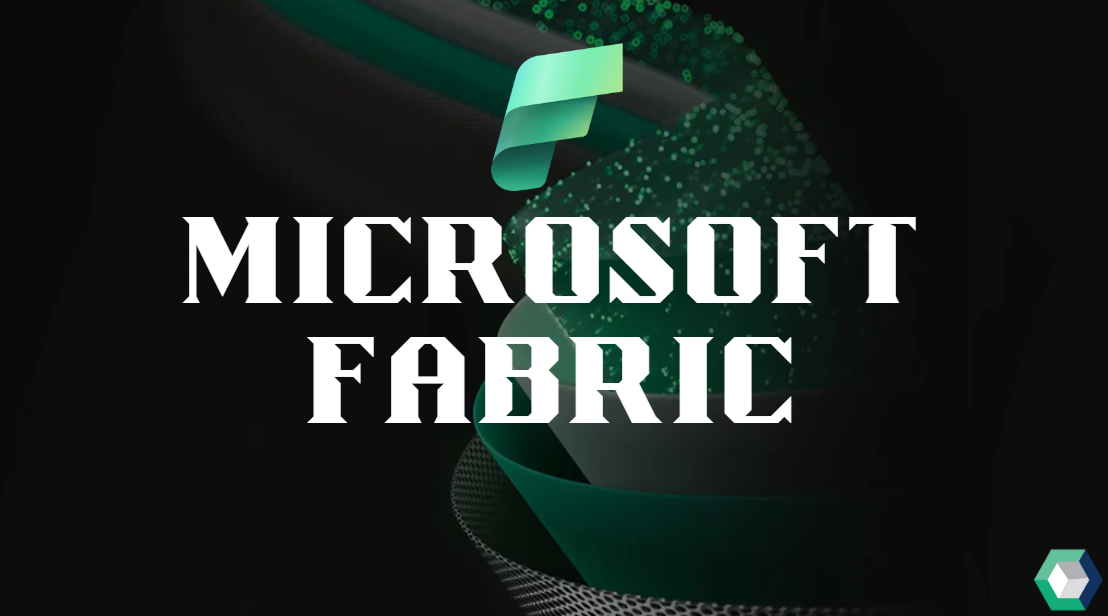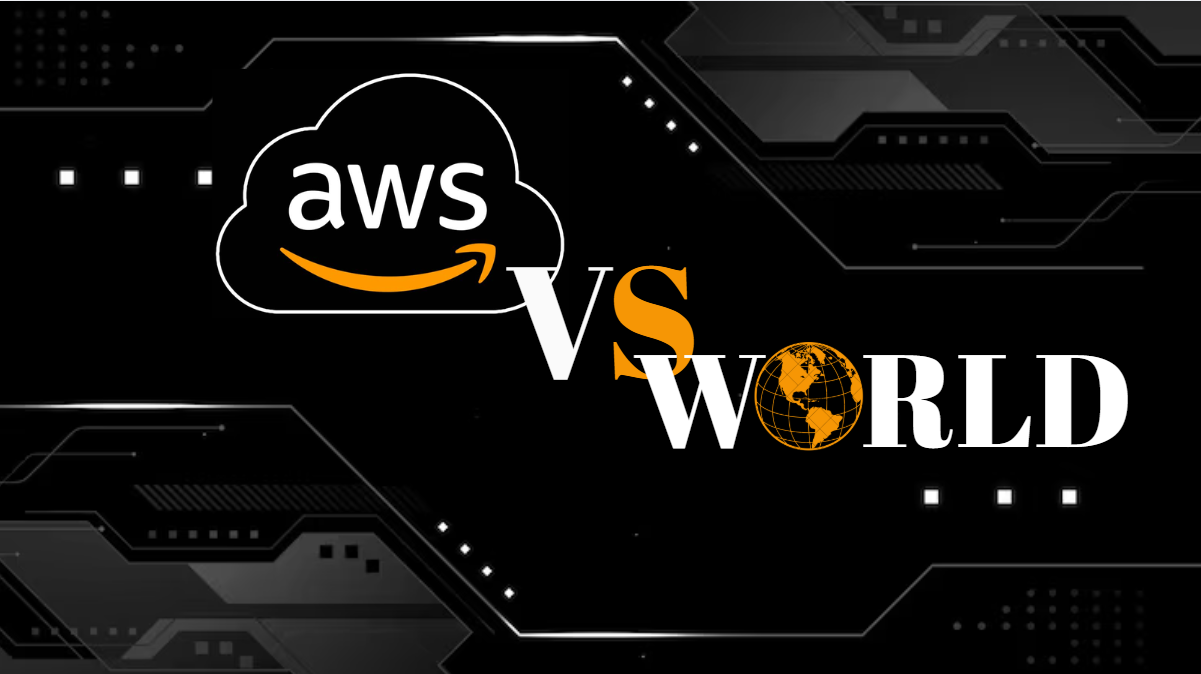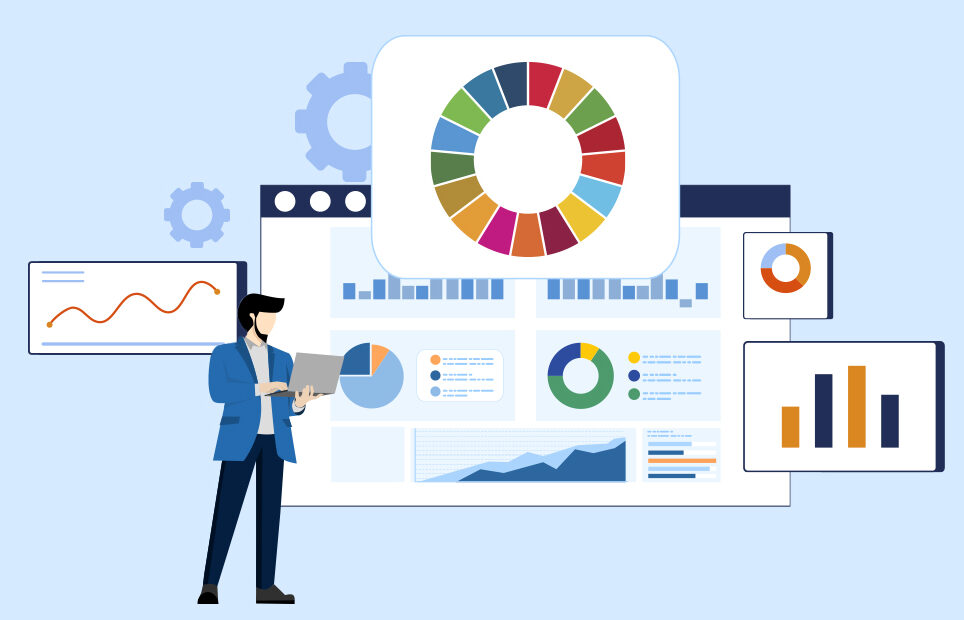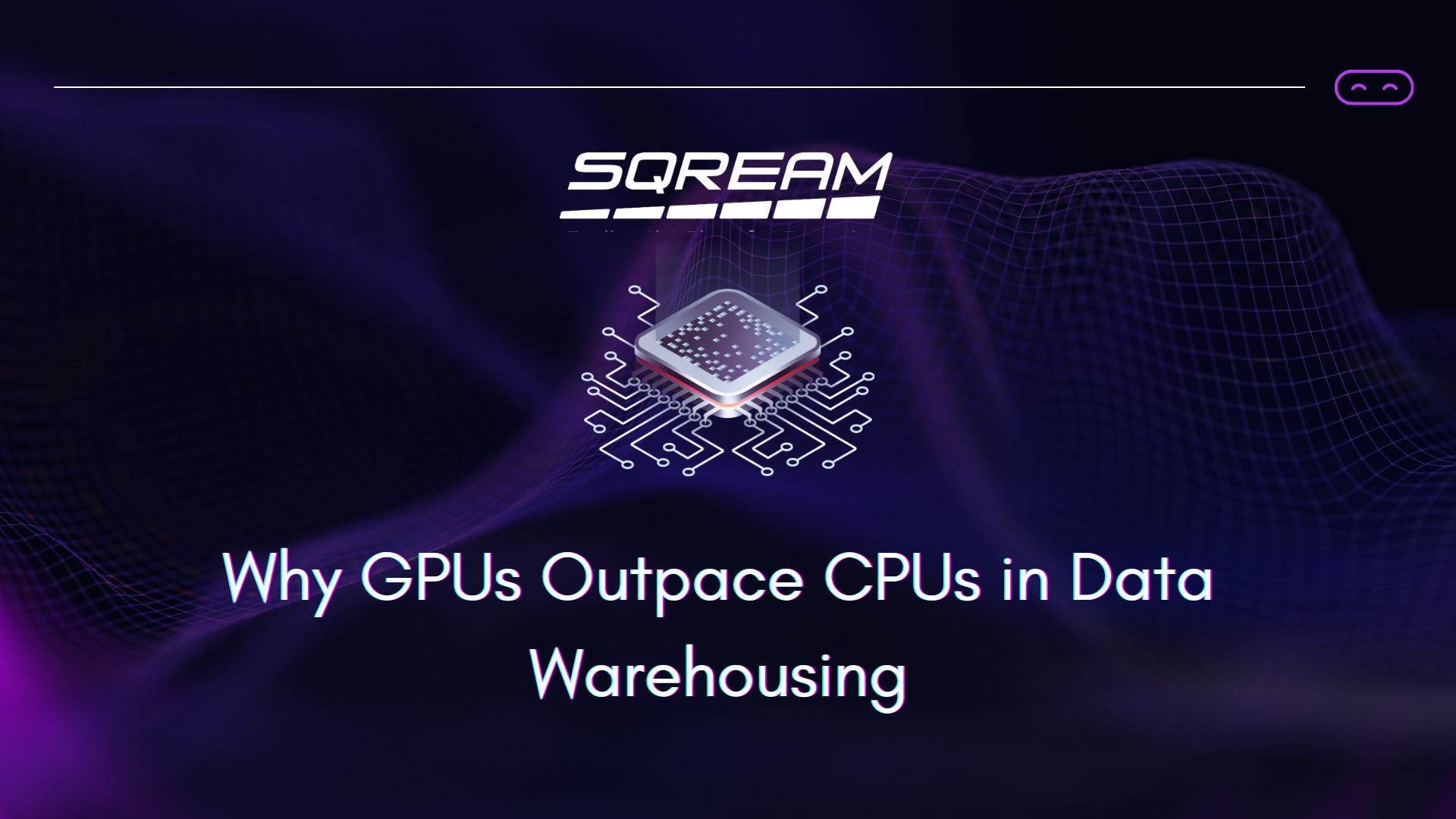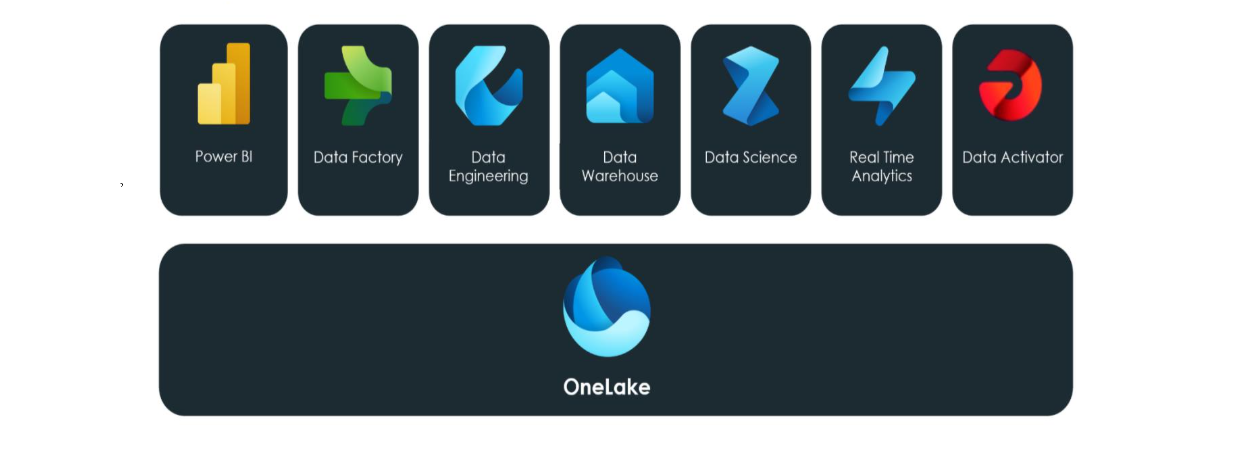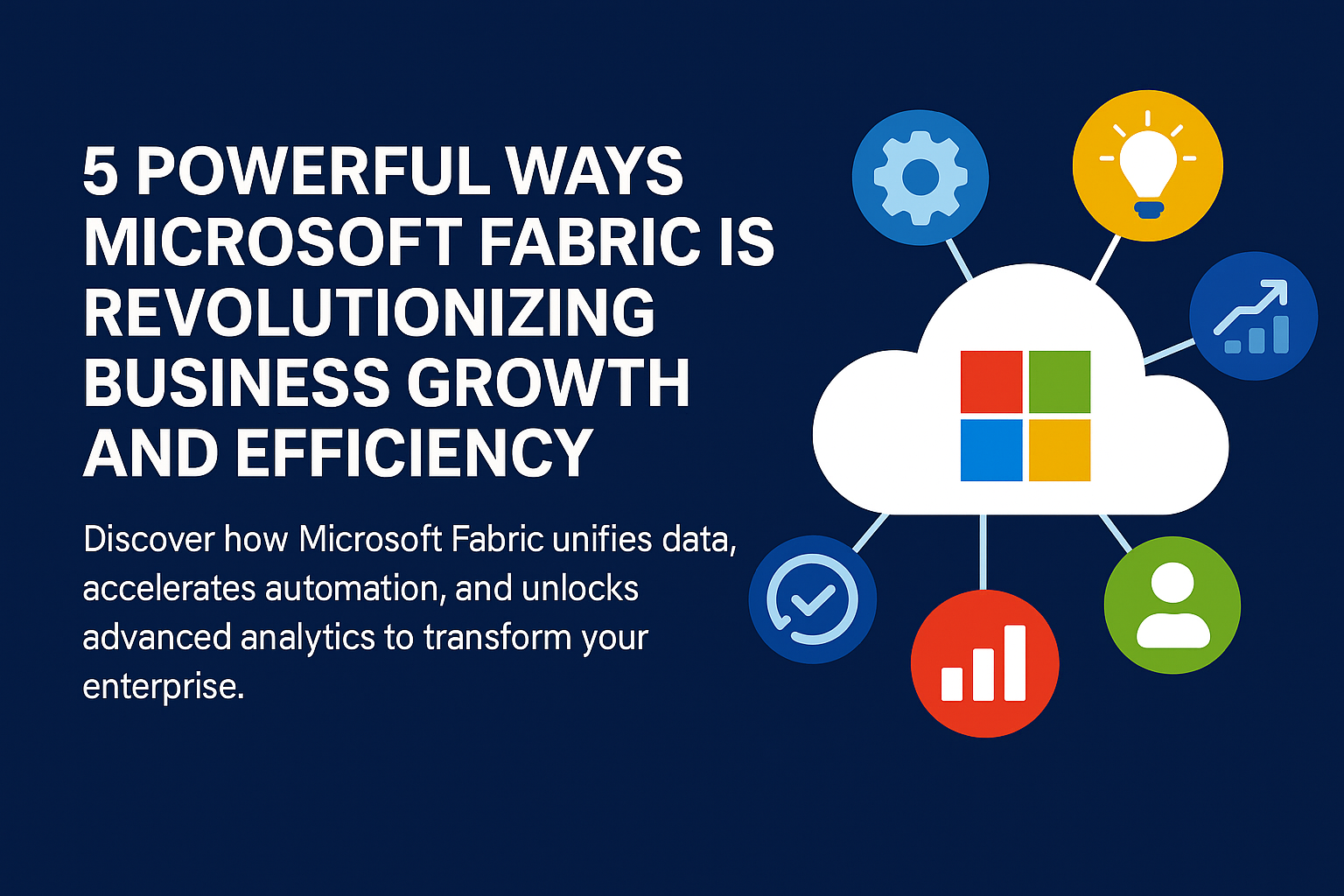Learn what’s new in Cognos from some of the people who know it best. On this episode, we welcome Michael Peter, IBM Technical Sales Leader for Analytics, and Chris McPherson, IBM Cognos Analytics Offering Manager, to share the latest updates on IBM’s business intelligence solution.
Jasmine Polkowske (00:15):
Coming live from Dallas, Texas is Jasmine from Cresco International. You know what they say. Everything’s bigger in Texas and that includes the stars we bring on our show today. Here we have with us Michael Peter and Chris McPherson. On the Cresco side, we have Ketty Mobley joining us to discuss what’s new in Cognos. I’m going to hand it off to Kenny now.
Kenny Mobley (00:36):
Hey Michael and Chris, thanks so much for being with us today. But before we get started, I’d like to learn a little bit about both of you and what you do for IBM.
Michael Peter (00:47):
Oh, sure. Thanks Kenny. So, I am part of what’s known as the partner ecosystem. I work with a variety of our partners such as as Cresco and am primarily focused on Cognos Analytics. My history is totally in Cognos. I’ve gone back to 98 when I started with the Cognos and worked with the tool in a variety of ways over the past 20 plus years. Today I’m mostly focused again on working with our partners to help them understand better strategies of how to get the product into their clients and make it successful.
Chris McPherson (01:20):
It’s Chris McPherson here. I’m the Offering Management Leader for Cognos Analytics, so I lead a team of product managers who are responsible for the Cognos Analytics portfolio, both on cloud and on premise. And I’m based in Ottawa, which is where the Cognos R&D is centered. I’m like a legacy cognitive person myself, like Michael. I was with Cognos since 2005 so I’ve been doing this awhile as well.
Kenny Mobley (01:46):
So it appears that in the last few years, Cognos has lost some traction through rivals like Tableau and Click. What are some of the key changes that are being made in an attempt to change this perception?
Michael Peter (01:58):
Well, you know, there’s no denying that we lost some market share to those vendors and I think it’s important to understand why as a context of where we are headed and the changes that we’re making. This market has seen a pattern that shifts between control of information delivery and line of business doing things on their own. You know, Cognos was built on user-focused tools like Power Play but as those grew in an organization, it needed more governance and scalability. So we evolved in that direction and that made it difficult for the line of business users to get what they needed, so they turned back to desktop tools and in that cycle it was dashboard and data visualization tools like Tableau, you know, those are the ones that got the attention. What’s interesting is we’re already seeing the next shift though and I think a lot of that is due again to a lack of governance, but in particular the lack of analytics governance. What I mean by that is organizations are finding that having a tool to easily create a dashboard does not always yield reliable answers
Michael Peter (03:00):
because not everyone understands how to do data analysis. You know, our answer to that, and as we look at the future and where we’re going to change that perception issue say is AI. And I think that’s why we are working to make AI so pervasive in Cognos Analytics. Chris, you got some ideas on that?
Chris McPherson (03:20):
Yeah. As you pointed out, Michael, you know, we really did I think lose some market share just around the whole self service visualization agenda, particularly on the desktop. You know, we’ve done a couple of things. First thing we’ve done over the past few years is really worked on our self service and visualization capabilities. So if you’re looking, especially with 11.1, in the past 12, 18 months, we’ve made some great progress in terms of the quality and interactivity, dashboards and visualizations. So I think we’re now at a point where we’re able to compete with those other vendors by providing these capabilities that give you the same degree of functionality, but with the governance that Michael talked about underneath. Even more importantly, we’ve put a huge focus on AI and machine learning over the past two years. We’ve done a lot of work building up the foundation and the infrastructure to be able to support some pretty exciting AI driven features and in the past six to nine months we’ve really been bringing some of these features to market. Things like predictive forecasting as an example, the natural language conversation assistant – these are just automated content creation. These are just a couple of examples, but we see AI and machine learning as really an area where where we can differentiate because you know, if you look across the market, visualizations and dashboards have pretty well monetized. Everyone has pretty pretty visualizations. Everyone has a dashboard. So we see AI in particular as an area that we can really differentiate and create some white space between IBM and some of our competitors.
Kenny Mobley (04:56):
Chris, I appreciate that and I want to dig in a little deeper until the end to the machine learning and AI aspects of what you’re talking about. But before that, I want to go back and talk a little bit more about the self-serve analytics side. When I was at GameStop, we took heavy advantage of the features within Cognos to move to a self service environment to GameStop where it was all in the past, I have requests to it and us delivering reporting, we were able to use not only the features that allowed for easy report building and visualizations in Cognos, but also that governance piece, which was very important when you’re trying to move that out into an organization because it’s really difficult to just give people data without some kind of governance on how they might use it. I want to ask a particular question though about dashboarding. I know that a number of improvements were made, but in your opinion, how does dashboarding differ from reporting? I hear people use these terms synonymously, especially if a report happens to have a chart on it. So how should I use or think about these things differently and what has Cognos done to improve that dashboarding experience?
Chris McPherson (06:06):
So as I mentioned earlier, we’ve done a lot of work just improving the overall quality of the visualizations, the degree of interactivity. So I think really that’s the use case, the core use case for dashboard. It’s for someone who wants to do data exploration. They need a drag and drop. What you see is what you get a highly interactive experience, and that’s what we’re providing in the dashboard. We’ve also built in some of the embedded smarts, the Michael alluded to earlier,, but it’s really around a high degree of interactivity and something that’s very quick and easy for a line of business user or a new user to get started and start being able to get some value. Reporting on the other hand is really designed for someone who has specific requirements in terms of look and feel.
Chris McPherson (06:50):
You know, they may be financial reports but they really need that pixel perfect degree of control. It’s also the answer for when you don’t necessarily need to be live interacting in a very real time fashion with your data. A lot of the use cases we see are professionally authored reports or, or you know, authored reports that folks just scheduled to run overnight or on some kind of a calendar with different prompt values to different audiences and different formats. So I think both offering interfaces have a place and we’re one of the few vendors out there that provide both capabilities out of the box in a single product without anything else to buy or install. Michael, do you have anything to add to that?
Michael Peter (07:36):
I actually kind of agree with both of you. Chris, you’re absolutely right from the standpoint that the use cases of reporting as traditionally defined and absolutely are accurate in that regard are different from dashboarding and Kenny I agree with you as well from the standpoint that there is a little bit of commonality if you look at the intrinsic use case of both, they’re really about how do I get the information that I need. Right and it’s really a matter of how easy and fast can I get the information I need to answer the questions I’m trying to answer. No. For a long time reports were really the only option for that and as the dashboard approach gain popularity and the tools made it feasible, you know, that gain traction well as we talked about before and it made it easier for users to find that information on their own to a large degree. I think we’re continuing, as I said earlier, to see a shift in terms of how that information is used. And the whole concept of self service as you mentioned, comes into play.
Kenny Mobley (08:41):
Well let’s explore that a little deeper then Michael. What to you does self service mean and how has self service evolved over the years? As we’ve talked about using users having more capability to create stuff themselves, but I get the feeling that self service analytics has a deeper meaning than that. Could you explain it?
Michael Peter (09:00):
So it does in my mind because I think that as I was talking about the evolution of Cognos, our focus is on very often been on self service. How can that user find that information? You know, self service reports were one thing in terms of creating those styles of reports on their own. Same thing with dashboards and if you think about it from that perspective, self service is kind of okay, how can I do something rather than relying on an expert to do it? Mmm. And the same thing is true of self service analytics. When you use that word is the analytics specifically as the context. But it’s different in that when you think about the first two dashboards or reports that expert usage was really, you know, how do I not write code might be an easy way of putting it. It was a very functional type of, of expert. When we get into analytics though, it’s not how do I do it, but more of the, why do I do it? It’s how do I infer things? Why would I use certain sets of data? What is the state of telling me what don’t. I know there’s so many facets to it that really have nothing to do with how I created a dashboard as much as what is this information telling you? And I think that’s the big gap that we are trying to address. It’s finding the best insights, the information that’s really going to make a difference to my business. Particularly things that I may never have thought to ask. Those are the skills that when we talk about the expert in this context, it’s the expert of the data scientist, if you will, in this world. So how can we take that expertise that a data scientist or deep data analyst might bring to the table and wrap that into a self service experience. Chris, talk a little bit about some of the details. I know you’re deep on some of the specifics we’ve done there.
Chris McPherson (10:54):
Yeah, I mean that’s a great explanation Michael. You know, what I might add to it is, you know, in my mind, self service means how do I get, how do I reduce the time to value for users. So if the users coming in to have a question in mind or perhaps they just want to learn something new or get some additional insight from their data, how do we enable them to do that? To give them, as Michael said, the best insight and most reliable insight, but also make it easy enough and fast enough that they don’t have to spend a lot of time getting there. At the end of the day, that’s what they want to get the answer and move on to the action and which is what this is really all about enabling them to make the right decisions, smarter decision, and then take the appropriate action. So I mean, you know, we’ve done so much in the past couple of years around self service, particularly in the dashboard. You know, we have literally started by picking a data source and then simply say generate dashboard and you know, the product, we’ll build you a dashboard to use as a starting point. So it’s these types of things that really remove the barriers and just sort of reduce the entry point for line of business user or someone without any kind of offering or coding experience to be able to identify dataset, you know, whether it’s asking questions or dragging and dropping to do data exploration and then get those insights quickly and be able to take action.
Kenny Mobley (12:17):
Yeah, that’s great and it really leads us into the next topic that we’re going to talk about and this is the natural language question feature, which I think is kind of an evolved state of this time to value. I mean, if I can just ask the computer a question and it’s going to respond to me, that kind of cuts through everything else and get you to the point that you’re talking about. Get you some insights and answers immediately. So talk to me a little bit about this feature. What is it and what’s going on in the background to make these answers feel natural?
Michael Peter (12:50):
Okay. So this is the conversation assistant that we introduced on 11.1. It’s a natural language processing capability where you can use natural language to questions to interrogate the data source and the tool will provide a response so it really is a two way conversation. We’re specific about how we refer to it as conversation assistance because unlike some other solutions out there, you know, it’s not just a simple, you ask a question, you get an answer and that’s it. Uh, it really is a two way communication where you may get a clarifying question, you may get a visualization as a response. You may get insights that you didn’t ask for and that you may want to look at that. So it really was designed to be a two way type conversation between the user and the solution and that it does make it feel more natural. It’s not just simply typing in words and getting words in response. What we have is a an ontology behind the scenes. This is juts a collection of terms that is constantly evolving, but it’s a collection of terms that are relevant across all industries. So as you’re typing things in it’s recognizing some of these concepts and it’s making decisions on what to show you and things to identify in your data. It’s running all of us in the background and then providing you with the best. That’s fine. Awesome. We’ll answer. You know, the neat thing about this is that we designed it in such a way that you’d be highly extensible. So we certainly envision, you know, in the not too distant future allowing a company in a particular industry or particular vertical to be able to bring their own ontology so that they have industry specific terms or perhaps, you know, in a large company they might have very specific ways of referring to things and they could bring their own ontology or modify our ontology so that their users get to the best possible outcome.
Michael Peter (14:44):
In fact, we’ve had another group at IBM do just that. They’ve brought their own ontology and have some help from us wired it in so that they are able to ask very specific types of questions and get very specific types of responses based on these, the dictionary of terms that they use on a day to day basis. So it’s pretty cool technology.
Michael Peter (15:04):
And Chris, you know, the thing for me, when we talk about the natural language being in a dialogue, it’s so much more than just two way. It’s all the natural language context that Cognos is adding to the picture now, particularly something like you get into our explore experience, which I love because it’s purpose built for this type of interactivity, right? Versus just creating things on my dashboard. I mentioned that earlier, that, you know, dashboards, sort of that visualization aspect, but not necessarily analytics. You know, it, it gives you all this natural language context about what you’re looking at and things you didn’t think of. One of the things I love often seeing is how it will put the chart on the screen says that you can see visually that something is, is higher than the other things on the screen. It will add a simple word like unless or unexpectedly higher. Then that’s indicating those things happening behind the scenes statistically to show that this, this is meaningful. This is not just simply higher, but there’s a bigger difference there then you might expect. It’s that elimination of, of uncertainty, that elimination of bias that I bring to the table. Um, that, that happens by giving me all this additional information and natural language that I don’t have to think the data science is out of the gate. It’s guiding me through that process.
Chris McPherson (16:24):
Yeah. It’s interesting you say that Michael, because you know, I’ve had various conversations with customers. So you know, over the past year or so since we’ve introduced explore and it’s amazing to hear how many people actually, their eyes are just drawn to that text. You know, you’ve got this nice visualization in the middle of the screen, but it’s the text that they’re looking at and the reading to get these insights. So yeah, it’s interesting how the combination of having those visualizations with the accompanying texts just drives home its more engaging. It just really lets you absorb or consume the insights that we’re providing in a much more effective way.
Kenny Mobley (17:01):
I agree as well as I’ve seen that it is fascinating to see it draw insights because of course the reasons that we’re looking at the visualizations is to look at them for insights that visualizations could show that perhaps data tables could not. So it’s very interesting to me to see how y’all have been able to embed that within the cognitive system in order to help users. Which leads me right into the next piece I want to talk about when it comes to Cognos and its advanced features on the machine learning and AI side. That’s something that I’ve heard referred to and I know IBM refers to often as embedded smarts and this is the feature that learns and adapts to a user’s work style. So it’s a different way of using this. But I’m guessing it’s somewhat similar, but what does this mean to the user, this embedded smarts?
Michael Peter (17:47):
So when we talk about smarts and embedded smarts, it is a fairly all encompassing term. It’s sort of our simple way of referring to a variety of the technologies that exist in inside the product to do all the things that we’ve been talking about so far. At its core is, is the concept of AI, right? It’s important to recognize AI. I think the way we look at it, you also have to dissect that a little bit. You know, when people hear the term AI, the immediate audio is artificial intelligence and that deals with, you know, the deeper data science and machine learning and deep learning and things of that nature. But also AI, it has the context of what we call augmented intelligence and that is very user focused. That is how do we use the AI, the former description, the machine learning and things like that to augment the intelligence of the user.
Michael Peter (18:46):
How can we do things easier for them? How can we do things smarter? How do we, as I mentioned, eliminate bias any, anywhere and everywhere that we can take something that a user is trying to do and make it easier for them. That’s how we can apply the quote smarts. You know, I think that as you mentioned, part of it is learning user approaches to things. A lot of it is training we built in already. Let’s take for example data visualization, right? There’s lots of tools out there that do them. We do them as well. But what’s interesting is how much time we spent in terms of training the tool to look at the data in a fairly deep way and understand, okay, with the data this user’s requesting, what is really the best way to visualize that?
Michael Peter (19:36):
And then it will render the chart appropriately. But we recognize that there’s lots of preferences, lots of charts that options that are out there. So the tool starts learning. If I constantly reflect the different one, I shouldn’t have to do that every time. So now the tool will actually say, okay, instead of a bar chart, I’m going to give you a scatter plot or whatever the case may be. You know, because that’s what you tend to prefer and it will constantly adapt to that. So the smarts is all the stuff we’ve programmed in and designed into it along with continuous learning that we’re trying to get it to do to address the user work styles that you described.
Chris McPherson (20:15):
Yeah, that’s a great example, Michael. The visualization recommender, you know, we’re evaluating the data that you selected for gesture basis, basically to show you the correct visualization at the right time. You know, we do that. That’s kind of a follow on effect of something we do a little earlier in the process where you select your data source, we identify the kind of data types that you’re using and we can determine what’s a measure, what’s a category, what’s a geographic location, what represents time so that we use that information when you’re dragging these things onto the canvas and make those smarter decisions to give you the best possible visualization. You mentioned augmented intelligence. I really do love that term because I think what we’re doing is really is just that, you know, you’re building, you’re dragging and dropping or you’re looking at a visualization somebody else built for you.
Chris McPherson (21:07):
And you know, without even asking it, the product is analyzing the underlying data, looking for patterns, looking for outliers and predictive drivers and then giving them access, giving you access to those things really right, individualization with the click of a button. So we made some really great and really exciting progress on that topic. In the last couple of releases, most specifically with the time series forecasting that we brought out in 11.1.4 where literally with a single click will, the product will run a number of different algorithms independently to pick the right one so that you get a statistically accurate forecast right in place. That’s just one example of what Michael mentioned, augmented intelligence where we’re not replacing the human mind, we’re just showing them insights to make their job easier and allow them to make smarter decisions to take better action.
Kenny Mobley (22:04):
Yeah, that’s great and those are some of my favorite features. Those of us that have been in analytics for a long time know that choosing the right visualization and doing the things you need to do to make it look good and be correct can be difficult and take a lot of work and having some kind of augmented help definitely is something that’s valued. I’m glad that y’all are putting the time and effort into that. I want to talk about something a little bit more practical now and that’s about getting into using Cognos. I think there’s some idea out there that using Cognos as a large enterprise tool is very difficult, but is that still the case? How easy is it to get into Cognos these days?
Michael Peter (22:48):
Yeah, it’s funny because we started the conversation around perception, right? And I think that is still unfortunately a perception that people have to get started with the Cognos. You got to get it involved and you know, big implementation, lots of time and effort and it really doesn’t exist anymore. Literally today. Anyone can go to ibm.com, or Kenny your website and, and get started with a trial, download it, start working with it. It’s completely cloud based. You can get access to your on-prem data. All of that is available to you to get started right away. Or you can start with a spreadsheet and start analyzing your data from that way. This nice thing is the trial is free for 30 days, but then you can go on and immediately just transfer that into a single user license if you want for as little as $15 a month, you can start working with Cognos and leverage, know much of the power that we’ve about today. If you want all of it, it’s a little bit more, but still it’s something delivered on the cloud and very easy to get started with. And of course, you know, as companies grow, if they outgrow what we can do on the cloud, companies such as Cresco can, they can certainly help migrate into the larger environments as well. But we’re finding so many more people are able to get started now, just to get access to the tool now, once you’re in it, even the whole, the idea of how do I use it, we’ve addressed that with, it’s a tremendous amount of online or should I say inline tool, so right within the interface, access to videos and tutorials and examples, just a variety of things that help you get over the common humps that we see with users. In fact, we’ve done a tremendous amount of study watching users use the tool and it’s pinpointing those spots where they tend to have issue and we’ve addressed that. So both in the design itself, but also in these tutorials. We’ve expanded our community on ibm.com so lots of interactivity with users asking questions, sharing knowledge. In fact, very soon we’re gonna introduce what we call an accelerator catalog, which takes that concept of samples to the next level where there’s going to be extensive array of different types of content that you’ll be able to walk through and use and understand exactly how to solve a problem. Very similar to your own right so very more tailored content to allow users to get access again the types of things they need to get started.
Kenny Mobley (25:16):
Yeah. Yeah. That’s perfect. I really look forward to that. I love these accelerators. Fast starts things that help people, you know, up and running in a bench. A lot of people will learn now that it is easy to start using Cognos in their, in their own environment and it being available on the cloud really makes it not any problem at all to get started and start to take advantage of some of these great features. So now that we’ve talked some about what Cognos is, what it does, how it might be used, what are some of its benefits, I’ve really liked that. Chris, what’s next for Cognos? What things do you all have on your plans for the next couple of years?
Chris McPherson (25:53):
In the very near term, we have a new release coming out probably next week, 11.1.6 which is going to have some great new feature- some enhancements to conversation assistance, some enhancements to reporting, dashboarding, visualization. So lots of great stuff coming in the 11.1.6 release mext week, but on a larger scale or more strategic area, we have a handful of areas that we really want to focus on in the coming year to 18 months. So first, we talked a lot about AI and that’s going to continue to be a big focus for us. That means both developing our own capabilities but also leveraging other technologies coming out of Watson APIs, IBM research and elsewhere and IBM. So we are going to be investing heavily in AI and just to take those capabilities that we’ve got to the next level.
Chris McPherson (26:47):
The second area is the integration we have with planning analytics. So, you know, we do have a number of joint customers, customers who use Cognos Analytics for the reporting and analysis. They use planning for the budgeting forecasting. These two products just have so much synergy and there’s such an opportunity there to really get them more tightly integrated so that you can really move from planning and budgeting into tracking and measuring how your plan is executing and then feeding those up which comes back into your planning process. So we’re going to spend a lot of time and effort bringing those two products closer together, making that integration much, much tighter. And we’re also doubling down on our cloud investment. So, you know, Michael talked about our on-demand cloud offering a few minutes ago, you know, we’re going to continue to build up the capabilities there because I think we really do have one of the most flexible deployment options in the market as he pointed out. You have a on demand cloud, which you can start with a single user. For example. We have our dedicated cloud on premise of course, and we have hybrid cloud offering. So like cloud pack for data, Cognos analytics for example. So we really do want to invest in that area and really be cloud first so that we have the right solution at the right time for our customers who are looking to modernize or move their workloads to cloud because we know that many of them are thinking about that. If they are, if they’re not moving now they’re, you know, somewhere on their horizon is a move to cloud, whether it be for cost savings, whether it be for modernization, we want to make sure we have the right tools at the right time to help them on their journey to cloud.
Kenny Mobley (28:29):
That’s great. Thanks Chris. I really appreciate all that insight y’all have been able to give us today on Cognos and let us look a little deeper, not only into some of the functions that Cognos provides, but some of the things that that team has been thinking about and how y’all make the product better for everybody and some of the thoughts that goes into that. So I appreciate all that.
Jasmine Polkowske (28:48):
Thank you so much Michael and Chris for taking the time to talk with us today. It was great to hear your thoughts on Cognos and thank you to our listeners for tuning in today. Please be sure to follow us on LinkedIn under Cresco International and on Twitter @Cresco_Intl to stay up to date on the latest news in the analytics world.

